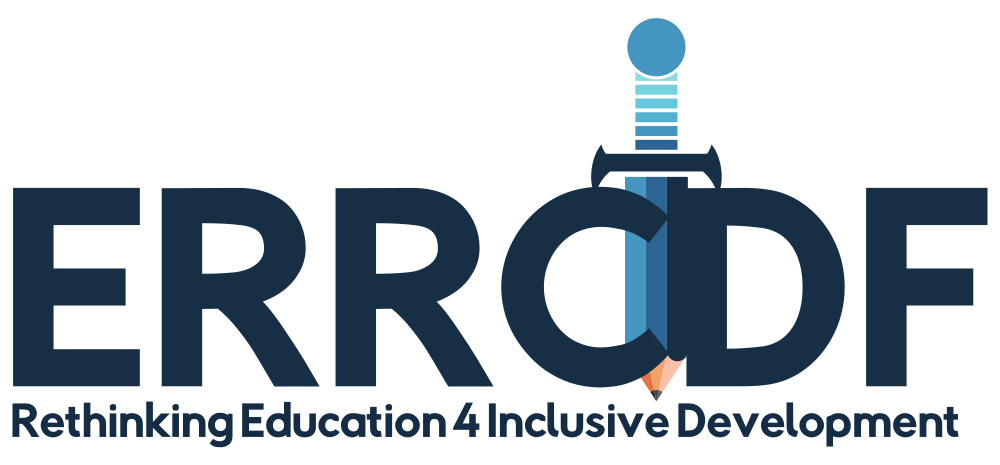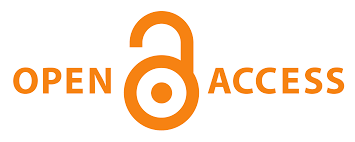Physics difficulty and problem-solving: Exploring the role of mathematics and mathematical symbols
DOI:
https://doi.org/10.38140/ijer-2024.vol6.08Keywords:
Physics difficulty , problem-solving, mathematics, mathematical symbolsAbstract
Reports of difficulty in physics has been documented over the years, especially at the senior secondary level. The application of mathematics as a tool for understanding physical phenomena and problem-solving is well-established. The use of symbols and mathematical rigour is essential for effective problem-solving in physics. However, the teaching and learning of physics have encountered barriers, as highlighted in the literature on competencies in this field. This study focuses on exploring the interlink, context, and associated barriers in the teaching and learning of physics by reviewing existing literature on the application of mathematics and mathematical symbols. Through a theory synthesis design, the study examined the current state of literature on mathematical problem-solving in physics, as well as the differences between mathematising and the application of mathematics in physics. The competencies required of teachers and students were also highlighted in order to better equip physical sciences teachers to address the challenges faced by students in learning physics. The literature suggests that a well-sequenced approach to topics by both mathematics and physics teachers can facilitate knowledge transfer among students. Teachers are encouraged to provide step-by-step guidance to address students' mathematical deficiencies, particularly in the physics aspect of the physical sciences curriculum at the further education and training (FET) phase. It is recommended that topics between physics and mathematics be aligned and mathematical concepts be pre-teach to enhance students' contextual knowledge transfer.
References
Adams, W. K., & Wieman, C. E. (2015). Analysing the many skills involved in solving complex physics problems. American Journal of Physics, 83(5), 459-467. https://doi.org/10.1119/1.4913923
Arcavi, A. (2005). Developing and using symbol sense in mathematics. For The Learning of Mathematics, 25(2), 42–47. https://www.jstor.org/stable/40248497
Badmus, O. T., Amuda, A. A., & Bada, A. A. (2020). Consonance of General Mathematics and Physics: The Learners’ Achievement Symmetry. Nigerian Online Journal of Educational Sciences and Technology, 2(1), 16-23.
Badmus, O.T., & Jita, L.C. (2023). Does further-mathematics predict students’ performance physics? A correlational diagnosis of three years secondary education. Journal of Technology and Science Education, 13(1), 381-392. https://doi.org/10.3926/jotse.1631
Badmus, O. T., & Jita, L. C. (2022a). Didactic handout on nature of science: Toward effective teaching of physical science curriculum. Science Education International, 33(3), 306-312. https://doi.org/10.33828/sei.v33.i3.6
Badmus, O. T., & Jita, L. C. (2022b). What is next for Africa’s youthful and useful population? STREAM education for global inclusivity. Journal of Culture and Values in Education, 5(2), 32-46. https://doi.org/10.46303/jcve.2022.18
Badmus, O. T., & Omosewo, E. O. (2020). Evolution of STEM, STEAM and STREAM Education in Africa: The Implication of the Knowledge Gap. International Journal on Research in STEM Education 2(2) 99-106. https://doi.org/10.31098/ijrse.v2i2.227
Bardini, C., & Pierce, R. (2015). Assumed mathematics knowledge: The challenge of symbols. International Journal of Innovation in Science and Mathematics Education, 23(1), 1–9.
Basson, I. (2021). Twenty years into the new millennium: How integrated is Mathematics, Physics and Computer Science at secondary school level? Perspectives in Education, 39(4), 3–26. https://doi.org/10.18820/2519593X/pie.v39.i4.2
Basson, I. (2002). Physics and mathematics as interrelated fields of thought development using acceleration as an example. International journal of mathematical education in science and technology, 33(5), 679-690. https://doi.org/10.1080/00207390210146023
Begg, M., & Pierce, R. (2021). Symbols in Physics: Difficulties Experienced by First-Year Undergraduate Students. Journal of College Science Teaching, 50(5), 18–23. https://www.jstor.org/stable/10.2307/27133117
Burkholder, E. W., Miles, J. K., Layden, T. J., Wang, K. D., Fritz, A. V., & Wieman, C. E. (2020). Template for teaching and assessment of problem-solving in introductory physics. Physical Review Physics Education Research, 16(1), 010123. https://doi.org/10.1103/PhysRevPhysEducRes.16.010123
Chiu, M. (2015). The challenge of learning physics before mathematics: a case study of curriculum changes in Taiwan. Research in Science Education, 46 (6), 767-786. https://doi.org/10.1007/s11165-015-9479-5
Chubb, I., Findlay, C., Du, L., Burmester, B., & Kusa, L. (2012). Mathematics, engineering and science in the national interest. Commonwealth of Australia.
De Lozano, S. R., & Cardenas, M. (2002). Some learning problems concerning the use of symbolic language in Physics. Science & Education 11, 589–599 (2002). https://doi.org/10.1023/A:1019643420896
Department of Basic Education (2022). 2022 National Senior Certificate examination report. Government Printer.
Department of Basic Education (2021). 2021 National Senior Certificate examination report. Government Printer.
Department of Basic Education (2020). 2020 National Senior Certificate examination report. Government Printer.
Department of Basic Education (2019). 2019 National Senior Certificate examination report. Government Printer.
Department of Basic Education (2018). 2018 National Senior Certificate examination report. Government Printer.
Dirac, P. A. (1940). XI.—the relation between mathematics and physics. Proceedings of the
Royal Society of Edinburgh, 59, 122-129. https://doi.org/10.1017/S0370164600012207
Galilei, G. (1623). The Assayer. In S. Drake & C.D. O'Malley (Eds.), The Controversy on the Comets of 1618 (pp. 183-184). University of Pennsylvania Press.
Gick, M. L., & Holyoak, K. J. (1987). The cognitive basis of knowledge transfer. In Transfer of learning (pp. 9-46). Academic Press. https://doi.org/10.1016/B978-0-12-188950-0.50008-4
Guangming, W., Qianping, W., Yongjian, Z., & Libao, W. (2019). The re-exploration of the structure system of teachers' key competencies and abilities. Education Sciences in China, 2(4), 59–73.
Jaakkola, E. (2020). Designing conceptual articles: four approaches. AMS Review, 10(1–2), 18–26. https://doi.org/10.1007/s13162-020-00161-0
Hoban, R. A., Finlayson, O. E., & Nolan, B. C. (2013). Transfer in chemistry: A study of students’ abilities in transferring mathematical knowledge to chemistry. International Journal of Mathematical Education in Science and Technology, 44(1), 14–35. https://doi.org/10.1080/0020739X.2012.690895
Hongjun, X. (2018). Key competencies of physics: Perspective, discussion and reconstruction. Educational Science Research, 11, 5–14.
Hsu, L., Brewe, E., Foster, T. M., & Harper, K. A. (2004). Resource Letter RPS-1: Research in problem-solving. American Journal of Physics, 72(9), 1147–1156. https://doi.org/10.1119/1.1763175
Kirby, N. F., & Dempster, E. R. (2018). Alternative access to tertiary science study in South Africa: Dealing with ‘disadvantage’, student diversity, and discrepancies in graduate success. In C. I. Agosti, & E. Bernat (Eds.), University pathway programs: Local responses within a growing global trend, (pp. 85–106). Cham: Springer.
Kuo, E., Hull, M., Gupta, A., & Elby, A. (2013). How students blend conceptual and formal mathematical reasoning in solving physics problems. Science Education, 97(1), 32–57. https://doi.org/10.1002/sce.21043 .
Jardim, W. T., Guerra, A. & Schiffer, H. (2021). History of Science in Physics Teaching. Science & Education, 30, 609–638. https://doi.org/10.1007/s11191-020-00191-x
Larkin, J., McDermott, J., Simon, D. P., & Simon, H. A. (1980). Expert and novice performance in solving physics problems. Science, 208(4450), 1335-1342. https://doi.org/10.1126/science.208.4450.1335
Liu, T., & Sun, H. (2021). Key Competencies of Physics Teachers. Higher Education Studies, 11(1), 28-33. https://doi.org/10.5539/hes.v11n1p28
MacInnis, D. J. (2011). A Framework for Conceptual Contributions in Marketing. Journal of Marketing, 75(4), 136–154. https://doi.org/10.1509/jmkg.75.4.136
Makgato, M. (2007). Factors associated with the poor performance of learners in mathematics and physical science in secondary schools in Soshanguve, South Africa. Africa education review, 4(1), 89-103.
Mao, P., Cai, Z., He, J., Chen, X. & Fan, X. (2021). The Relationship Between Attitude Toward Science and Academic Achievement in Science: A Three-Level Meta-Analysis. Frontier in Psychology, 16(12):784068. https://doi.org/10.3389/fpsyg.2021.784068
McComas, W. F. (2020). Principal elements of the nature of science: Informing science teaching while dispelling the myths. In W.F. McComas (Ed.), Nature of Science in Science Instruction (pp. 35-66). Berlin: Springer Academic. https://doi.org/10.1007/978-3-030-57239-6_3
McComas, W.F., & Clough, M.P. (2020). Nature of science in science instruction: Meaning, advocacy, rationales, and recommendations. In McComas, W.F. (Ed.), Nature of Science in Science Instruction: Rationales and Strategies (pp. 3-22). Berlin: Springer. https://doi.org/10.1007/978-3-030-57239-6_1
Moelter, M. J., & Jackson, M. (2012). Formulas in Physics Have a “Standard” Form. The Physics Teacher, 50(8), 472-474. https://doi.org/10.1119/1.4758146
Niss, M. (2012). Towards a conceptual framework for identifying student difficulties with solving Real-World Problems in Physics. Latin-American Journal of Physics Education, 6(1), 3-13.
Nouri, N., & McComas, W.F. (2021). History of science (HOS) as a vehicle to communicate aspects of nature of science (NOS): Multiple case of HOS instructors’ perspectives regarding NOS. Research in Science Education, 51(1), 289-305. https://doi.org/10.1007/s11165-019-09879-9
Park, M., & Liu, X. (2021). An investigation of item difficulties in energy aspects across Biology, chemistry, environmental science, and physics. Research in Science Education, 51(1), 43-60. https://doi.org/10.1007/s11165-019-9819-y
Passow, H. J., & Passow, C. H. (2017). What competencies should undergraduate engineering programs emphasise? A systematic review. Journal of Engineering Education, 106(3), 475-526. https://doi.org/10.1002/jee.20171
Petrus, R. M. (2018). A Comparison of Teachers' and Students' Perceptions of the Factors Contributing to Poor Performance in Physical Sciences: A Case of South Africa. Journal of Turkish Science Education, 15(4), 93-103.
Pingxia, S. (2018). Exploration of teacher professional development paths based on students key compentencies. Journal of Educational Development, 8, 63-67. https://10.16215/j.cnki.cn44-1371/g4.2018.08.012
Prince, R. (2017). The relationship between school-leaving examinations and university entrance assessments: The case of the South African system. Journal of Education, 70, 133–160.
Reddy, M., & Panacharoensawad, B. (2017). Students Problem-Solving Difficulties and Implications in Physics: An Empirical Study on Influencing Factors. Journal of Education and Practice, 8(14), 59-62. https://doi.org/10.1080/03057267.2021.1963579
Redish, E. F. (2014). Oersted Lecture 2013: How should we think about how our students think? American Journal of Physics, 82, 537–551. https://doi.org/10.1119/1.4874260
Redish, E. F. (2004). A theoretical framework for physics education research: Modeling student thinking. arXiv preprint physics/0411149. https://doi.org/10.48550/arXiv.physics/0411149
Redish, E. F., & Kuo, E. (2015). Language of physics, language of math: Disciplinary culture and dynamic epistemology. Science & Education, 24 (5–6), 561–590. https://doi.org/10.1007/s11191-015-9749-7
Retnawati, H., Kartowagiran, B., Arlinwibowo, J., & Sulistyaningsih, E. (2017). Why are the mathematics national examination items difficult and what is teachers’ strategy to overcome it? International Journal of Instruction, 10(3), 257–276. https://doi.org/10.12973/iji.2017.10317a
Retnawati, H., Arlinwibowo, J., Wulandari, N. F., & Pradani, R. G. (2018). Teachers’ difficulties and strategies in physics teaching and learning that applying mathematics. Journal of Baltic Science Education, 17(1), 120-135.
Sabella, M. S., & Redish, E. F. (2007). Knowledge organisation and activation in physics problem solving. American Journal of Physics, 75(11), 1017-1029. https://doi.org/10.1119/1.2746359
?ahin, E., & Ya?basan, R. (2012). Determining which introductory physics topics pre-service physics teachers have difficulty understanding and what accounts for these difficulties. European Journal of Physics, 33(2), 315. https://doi.org/10.1088/0143-0807/37/4/045705
Shuang, F. (2016). Enhance the development of middle school physics teachers based on key competencies. Physics Teaching in Middle School, 45(10), 82-83. https://doi.org/mall.cnki.net/magazine/Article/ZXWL201610050.htm
Sweeney, S.J., & McComas, W.F. (2022). Early elementary (K-4) teachers’ perception of the developmental appropriateness, importance, and potential for classroom inclusion of key nature of science aspects. Journal of Research in Science Teaching, 1-31. https://doi.org/10.1002/tea.21766
Taylor, D. (2005). Firmness, commodity and delight. Gazette of the Australian Mathematics Society, 32(5), 298-301.
Taylor, N. (2019). Inequalities in Teacher Knowledge in South Africa. In N. Spaull & J. Jansen (Eds.), South African Schooling: The Enigma of Inequality. Policy Implications of Research in Education (Vol. 10). Cham: Springer. https://doi.org/10.1007/978-3-030-18811-5_14
Tuminaro, J. (2004). A cognitive framework for analysing and describing introductory students' use and understanding of mathematics in physics. University of Maryland, College Park.
Tuminaro, J., & Redish, E. F. (2004, September). Understanding students' poor performance on mathematical problem solving in physics. In AIP Conference Proceedings (Vol. 720, No. 1, pp. 113-116). American Institute of Physics.
Tur?ucu, S., Spandaw, J., Flipse, S., & de Vries, M. J. (2017). Teachers’ beliefs about improving transfer of algebraic skills from mathematics into physics in senior pre-university education. International Journal of Science Education, 39(5), 587-604. https://doi.org/10.1080/09500693.2017.1296981
Uhden, O., Karam, R., Pietrocola, M., & Pospiech, G. (2012). Modelling mathematical reasoning in physics education. Science & Education, 21(4), 485-506. https://doi.org/10.1007/s11191-011-9396-6
Viennot, L., & Décamp, N. (2020). Why Critique? Why Physics?. In L. Viennot (Ed.), Developing Critical Thinking in Physics (pp. 1-19). Cham: Springer. https://doi.org/10.1007/978-3-030-43773-2_1
Vygotsky, L. (1962). Studies in communication. In Hanfmann, E., & Vakar, G. (Eds.), Thought and language. Cambridge, MA: MIT Press. https://doi.org/10.1037/11193-000
Downloads
Published
How to Cite
Issue
Section
License
Copyright (c) 2024 Olalekan Taofeek Badmus, Loyiso C Jita

This work is licensed under a Creative Commons Attribution 4.0 International License.










